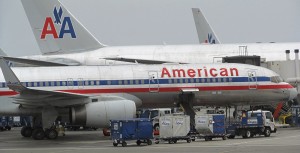The spread of iBeacon use continues, slowly but surely, in many different venues around the globe. Yesterday, American Airlines (AAL) indicated that it would make extensive use of iBeacon technology due to its compatibility with Apple Inc.’s (NASDAQ:AAPL) iOS 8, according to an article on Skift.
Pursuing the idea that iBeacons are perfectly suited to airport use, where tens of thousands of people daily need accurate directions to quickly navigate a labyrinthine, unfamiliar space in time to catch their flight, American Airlines (NASDAQ: AAL) announced that it is planning to deploy an unprecedented number of iBeacons at Dallas – Fort Worth Airport by the end of Q3 2014. This deployment is planned as a springboard to the use of iBeacons at every facility hosting American, which is slated to occur prior to January 1st, 2015.
 The declaration was made at a summit of SITA (originally the Societe Internationale de Telecommunications Aeronautiques), meeting to discuss information technology and telecommunications in the airline industry. SITA’s summit took place over the course of three days in Brussels, ending on June 19th, 2014. SITA noted the that travelers of the near future will be “technology empowered” to be “more self-sufficient … than ever before.”
The declaration was made at a summit of SITA (originally the Societe Internationale de Telecommunications Aeronautiques), meeting to discuss information technology and telecommunications in the airline industry. SITA’s summit took place over the course of three days in Brussels, ending on June 19th, 2014. SITA noted the that travelers of the near future will be “technology empowered” to be “more self-sufficient … than ever before.”
American Airlines’ initial deployment will consist of 100 iBeacons at the Dallas – Fort Worth Airport. The devices themselves will cost around $1,000, though this is probably the smallest item following programming and even the labor involved in placing the beacons. A beacon registry maintained by SITA will prevent the iBeacons eventually deployed by different airlines from interfering with one another.
Philip Easter went on to explain why AAL was using iBeacons rather than an alternative beacon system. Around 85% of American’s clients use iOS-enabled devices (that is, iPhones and/or iPads), meaning that the majority will be covered immediately by use of Apple’s (AAPL) beacons. Furthermore, direct support for iBeacon technology is built into iOS 8, which will make writing apps extremely easy for American’s designers.
iBeacons are, of course, a natural fit for airport use. With their geofencing ability, they can give very specific directions at various points in the airport on how to reach a gate, a baggage carousel, restrooms, a ticketing counter, customs, hotel and ground transport areas, food courts, emergency services, and so on. Finding these areas without directions, when exhausted from a long flight and navigating an unfamiliar airport where one’s first language may not be spoken, can be a nightmare – but American Airlines’ move, and those of other airlines which will doubtless follow suit, should greatly ease this burden.



